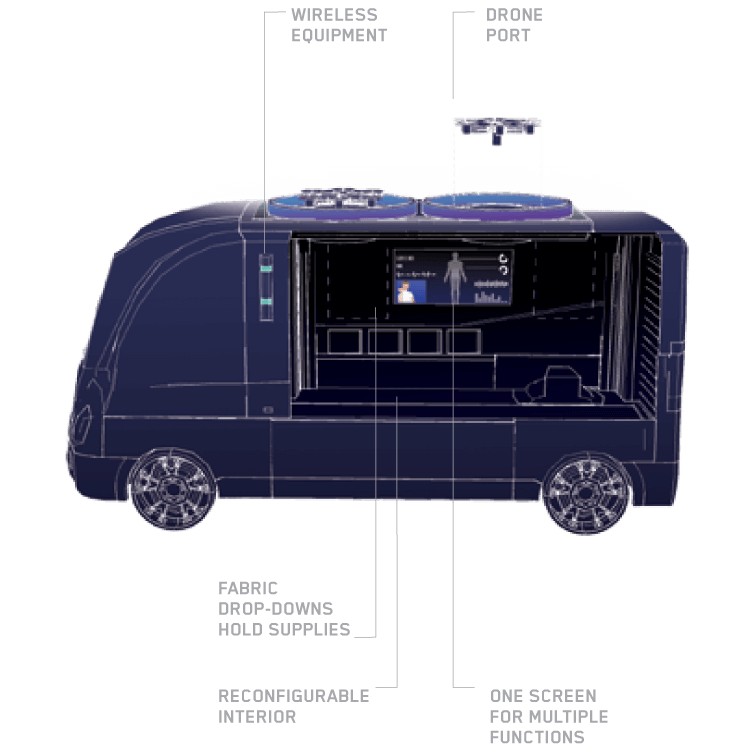Trauma Response
Though national data is difficult to compile, a recent auto insurance report put the national emergency response time to fatal accidents at 15 minutes and 19 seconds. In Chicago, it sometimes takes up to 33 minutes for an ambulance to arrive at a scene. Anyone presenting with a suspected heart attack should be evaluated and treated in less than 20 minutes. A recent study found that average wait time for women is 25.5 minutes and 18.5 minutes for men in the ER.
Chicago, a city of 3 million, is currently served by only 250 pieces of first-response equipment, including fire engines, fire trucks, ambulances, squads and helicopters. Fire calls made up only 3.7% of Chicago Fire Department calls. That’s 20 times more medical calls than fire calls.
SMART AMBULANCES

Ambulances of the future will be telepresent command centers, highly networked to local hospitals and cloud computing centers. Specialized ambulances for different trauma types will always be in motion and coordinate their responses, like a citywide immune system.
Physical redesigns for driverless ambulances and the miniaturization of imaging technologies will allow for rapid in-ambulance diagnoses. Triage will move out of the hospital. Blood can be taken and analyzed or sent by an ambulance-based drone to a lab anywhere in the city, within minutes. Specialized trauma teams on a local or national level can be patched into the ambulance to craft a surgical plan before the patient even arrives at the hospital.
